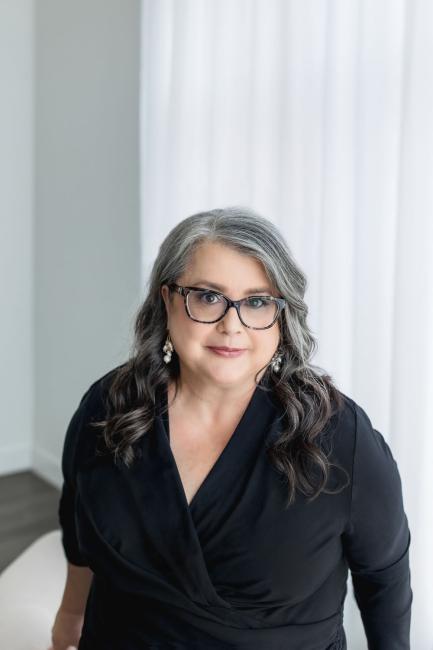
The Group
I have a photo of myself on a bed with six other girls; we’re all lying on our sides, kicking our legs in the air like reclining Rockettes and laughing wildly. The photo was taken sometime during our senior year in college, after we’d spent many vacation and summer days together. I don’t display it, but I’ll never discard it, either. It’s the only photo of me as part of “the group,” as I mentally refer to my husband’s high-school girl friends.
More than thirty years later, this group remains unusually close. The core friends vacation together, stay in touch via Facebook, attend one another’s major life events (which, at this point, include both christenings of children and funerals of parents), and have dozens of photos taken together from their recent thirtieth high-school reunion. I am in none of those.
In a recent New York magazine piece, journalist Jennifer Senior examines the latest neurological findings on the effect of adolescence on the human brain and development. To summarize Senior’s findings: Researchers now know that a disproportionate number of people recall young-adult (described as ages fifteen through twenty-five) memories keenly, even after a number of decades have passed. Those memories aren’t simply nostalgia, either; adult success correlates strongly to high-school notions of attractiveness, making recollections and preferences—in music, in substances, and in friends—“especially adhesive.” As adolescent cultures generate their own values and priorities, they also generate their own methods of shame and punishment, which include choosing who is allowed within the fold and who is cast out of it.
No wonder my husband’s high-school friends still stay in such close contact: They have loved and supported and seen one another through multiple life stages, but there’s something special about bonding during adolescence, in which like calls to like, and likes it a whole lot. As humans, we bond to avoid what one of the scientists in Senior’s piece calls “the giant box of strangers” that we’re each thrown in when we enter a huge group like high school: All sorts of groups, from vicious street gangs to mild-mannered book clubs, are variations on narrowing that box’s contents down to those who are most congenial to us.
But this phenomenon, by the time I met my husband in college, made it difficult for me to enter my husband’s gang of friends. The problem might have gone away entirely if I had not married him. If we had broken up during college, I would have remembered this group as particularly insular, but spent more time making my own friends. As it happened, and much to my chagrin, I, a heterosexual female with more than a few traditional ideas about courtship and marriage, cleaved unto my boyfriend and took on all of his interests and habits, which included hanging out with his friends.
This was a group I actually would have liked to have like me. They were—and are now—warm, smart, funny, and interesting. They planned outings great (forays to NYC clubs, weekends at Ivy League colleges, ski trips) and small (eating leftovers around kitchen tables, beers by the river) that were memorable for many reasons. Temperamentally a loner, I cherished these hours and days, feeling so much a part of things that I dared to spearhead a joint twenty-first-birthday party for five of us and even had one of “the girls” as my own bridesmaid (she married much, much later, and my husband and I were not invited to her wedding).
But once we were married, our ties with this group weakened—and did so even further as we negotiated the rounds of military life, with its frequent moves. My ever-stoic husband and “the guys” saw each other sporadically, mainly at reunions—but “the girls” kept their bonds strong with annual get-together weekends and trips. At that thirtieth high-school reunion, their love for each other was palpable, and I felt wholly left out.
So why did I attend? If I feel left out of this group, why not avoid them? The answer, of course, is because I don’t have my own. Oh, yes, I have friends, and lots of them—but I never had and never will have that sort of tight-knit group that we now know—it’s science!—can really only be formed within the crucible of adolescence.
There’s a moral to this story that is also a happy ending of sorts. This year, we who once turned twenty-one together are celebrating another significant birthday. It turned out that one woman’s fiftieth coincided with the annual get together for “the girls.” When another woman realized that “the guys” might be persuaded to come into Manhattan for dinner, a table for fifteen was booked at a chic boite (one of “the girls” is now a famous chef, which is very, very cool).
I talked to my husband about how nervous I felt attending this gathering. About how marginalized I’d felt back in college, how much I still yearned for his friends to like me, how terrifying it was to think I was just being invited as baggage. He’d heard all of this before, of course, but this time, both of us are much older and perhaps just a tiny bit wiser. We agreed that we would both make an effort not just to have a good time, but to make sure each of us was having a good time.
It was a wonderful evening, and if this is my valentine to it, that’s because I made an effort. I talked to every single person at the table individually, approaching them as I do people I love. Because I do love these men and women who helped to forge my beloved’s adolescence—and we are all grownups, now.
It will come as no surprise when I say that the group photos from that evening include me. And those that don’t? I “liked” every single one of them on Facebook.

